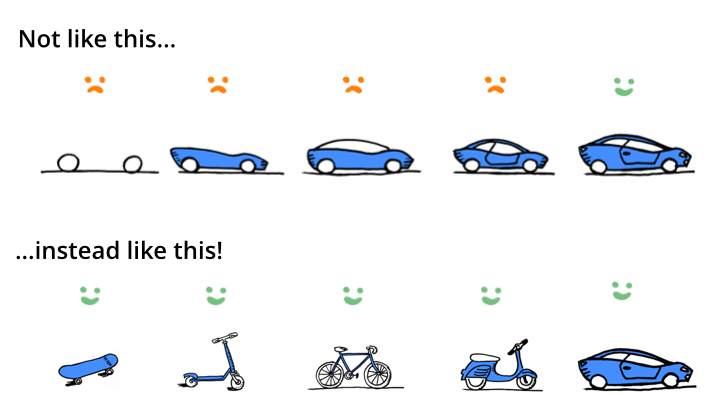Innovation was everywhere in 2016. Politicians declared ‘Australia: The Innovation Nation!’, startups became the cool thing to do and copy, enterprises started incubators, labs, skunkworks teams, and people everywhere were introducing innovation into their LinkedIn title (myself included!). Everyone searching for the next bright idea.
But as Chris Sacca, an investor in Twitter and Uber, once famously said, ‘Ideas are cheap, execution is everything.’ You see, without execution, Ideas are worth nothing. Try selling just an idea on its own and see how far you get.
Getting started is often the hardest part. All it takes is a small push and the momentum will do the rest. People making the effort to begin are already ahead of the pack who let their ideas simmer until one day they forget all about them and move on. But starting off can be a turbulent time as you fumble around trying to understand what is required to make your idea into a success.
For many projects, there are two distinct phases - Searching and Execution.
In the search phase the solution is unclear - will this make money? is there a customer who has a problem big enough to use my product? Am I even solving a problem? There is a lot of doubt, and often the idea will fail here (although you might not find out till much later).
In the execution phase, the product is now outlined. Customers have been engaged, little gems of information have been discovered, and a clear definition of a product has been validated with customers along the way. Now, the focus is on implementation and delivery.
Introducing… The Innovation Squiggle! (yes, that’s the technical name - at least I like to think so).
So how can you maximise your results? Are there strategies that can accelerate your growth? How can you progress from hunch to a clear vision and plan, bringing your customers on the journey in the process?
I’m glad you asked…
The double diamond
I was first introduced to the double diamond a few years ago working in a large innovation lab. A large consultancy had just finished a piece of work in the lab and had left behind some ways of thinking.
I was hesitant to read too much into their work, but as I’ve worked more and more in innovation processes and around product development, I keep coming back to this principle, as it makes a lot of sense to me as a baseline for successfully creating products that people love.
The double diamond was created in 2005 by the British design council, based on 50 years of experience working with UK organisations helping bring products to life.
The first diamond encourages thinking strategically and answer ‘why’ and ‘how’ the project will be successful. The second diamond executes the ‘what’ through iterative development. Each diamond is created by a phase of an open mind - divergent thinking, followed by a convergent phase which narrows in on the solution.
… There’s a pattern developing here! Remember that squiggle from before? The two diamonds align with the two earlier phases.
The double diamond can be broken into four phases:
Discovery - Starting with an idea or a hunch, the discovery phase puts emphasis on understanding user behaviour and needs. Key activities revolve around market and customer research.
Definition - The define phase aligns the needs of the customer with business objectives. Key activities involve gathering insights from user research, idea generation and filtering, business modelling, as well as project management and sign-off.
Development - Not to be confused with software development, the develop phase focuses again on divergent thinking around potential solutions to the agreed user problem.
Key activities include sketching options, visual design, prototyping, and user testing of concepts. This phase traditionally requires several iterations to find a fit with customer needs (more on this shortly).Delivery - By now the emphasis is on refinement of the idea, and build of the final solution for the customer. Key activities include development, testing, and roll out.
When it comes to timing, the four phases are flexible and there are no ideal lengths for each phase. Sometimes, discovery is entirely obvious, and you can move to definition and development. Other times you might spend months researching before making a decision how to proceed.
A word of caution, however, is to not jump into delivery too early. As a developer, I know there’s nothing better than skipping straight to the coding phase. But coding can be an expensive exercise, especially if you are building something that no one wants!
"Make sure you’re building the right it, before you build it right!”
Finding your fit
Ultimately, your goal is to introduce a product, service or solution that fit the market’s needs. But there are three key milestones required that a product will need to achieve to deliver value for you and your customers.
Problem-Solution Fit - Problem-solution fit occurs when you have developed an understanding of customer tasks, needs, pains, and opportunities that align with your initial hunch.
By achieving problem-solution fit you have shown the existence of a problem worth solving, combined with a developing a value proposition that addresses the customers’ tasks, needs, and pains.
Whilst achieving problem-solution fit is a great achievement, there is still a risk that customers don’t care enough about your solution to pay money for it.Product-Market Fit - Product-market fit occurs when you have evidence that your value proposition is creating value for customers by alleviating their pains and meeting their needs.
Where problem-solution fit is still theoretical, product-market fit is the delivery of a working solution that has been refined through small measured tests and subsequent learning.Business Model Fit - The final stage then, is making a profit!
Business model fit is achieved when you have a product that is making money, and is showing its ability to scale. You have been through several tests to understand a price point that is fair for your customers and optimised your solution to maximise profitability.
Depending on your stage, there are several awesome tools that you can use for finding your fit - one of which is the value proposition canvas.
The Value Proposition Canvas allows you to design products and services that customers actually want. In this short video, they walk you through the tool and how it works.
If you want to go deep on this stuff I highly recommend reading the books from Strategyzer. ‘Business Model Generation’ was one of those eye-opening game-changing books for me. Plus all of their books come with awesome resources that you can use over and over again.
Many small steps, lead to giant leaps
In years gone by, a fat cat would walk into a room, call the attention of his staff, and outline his grand idea.
Months would be spent on the opportunity analysis, followed by months of requirements writing. A vendor would be brought in to develop the product, another team would test against the requirements, find 1000 things wrong, and then everyone would argue about who’s fault it was.
Everyone lost sight of the key metrics - what value are we creating for customers, and do they love this product? In most cases, they didn’t…
Thankfully, we’ve moved on from those dark and desperate times, and we have got smarter about the way we deliver product features. Now, the new application components are broken into much smaller chunks, and the whole process of creating value for the customer has gone from years to days - i.e. the regular fortnightly download of your favourite applications from the App Store.
But still, there is an underlying problem of addressing customers desirability for a product. There is still a habit of being driven by the perceived needs of the customer, making decisions based on assumptions rather than actual real data… and you know what they say about assumptions!
The method introduced in the ’The Lean Startup’ by Eric Ries provides a scientific approach to creating startups and getting the desired product in customers hands faster. It teaches you when to pivot, and when to persevere, creating a business with the maximum efficiency.
Driving the method is the need to remove uncertainty from the decision-making process. It does so around three key phases. Build, Measure, and Learn.
In the Lean Startup method, the key is to create small tests which maximise validated learning. By creating a thin slice through your product’s features, and creating small tests around those features, you involve the customer at nearly every stage of development, maximising your chance of success, and customer desirability.
A core component of the Lean Startup is the MVP. The ‘Minimum Viable Product’ is the first version of the product that is released to begin the process of learning. In the case of the Maker Lab, my MVP was the sign-up form I launched a month before the first issue.
Ship, Sense, and Respond: A Culture of Continuous Learning - Jeff Gothelf
Where most people go wrong with the MVP is their understanding of what it is. In a lot of places, MVP is often just a code word for “We’re going with a smaller release with all the functionality of one component of a larger long-term plan”. But this misses the point.
There have been many attempts, but the best way I’ve seen the MVP described is the following image (from a great LinkedIn post on MVP's).
My tip to people starting out, just remember, you’ve already taken the first step, and that’s the hardest one. Now, get out there and talk to people and get them excited. Show them pictures on the back of a napkin, paper, keynote, what ever it takes to get your idea across, and then learn from their response!





